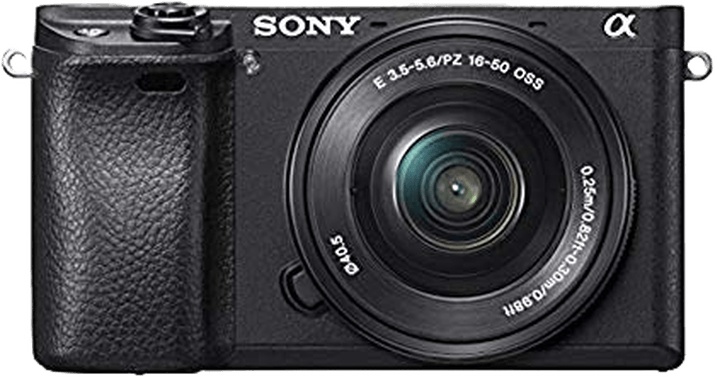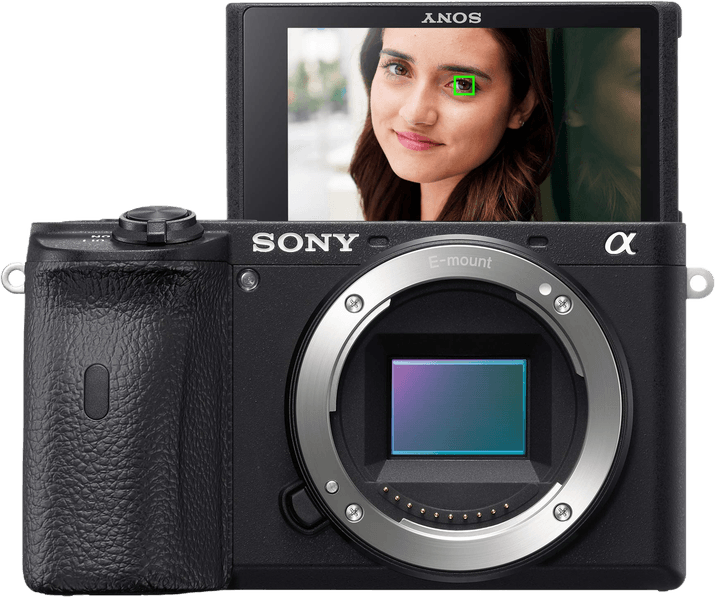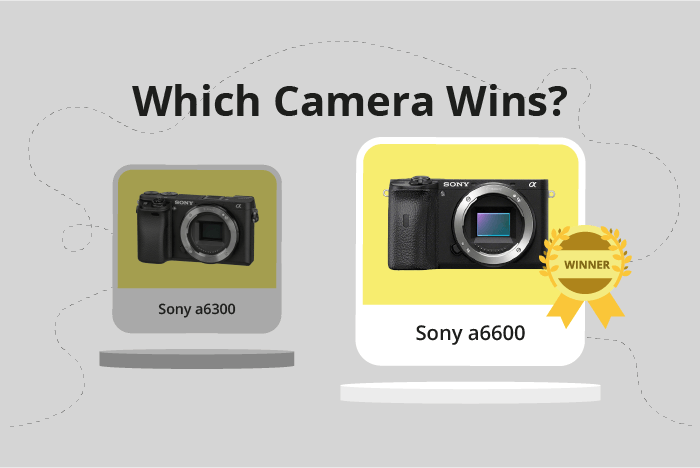Sony a6300 vs a6600 Comparison
Sony a6300

Sony a6600

The Sony a6600 comes out on top with a score of 75/100, compared to the Sony a6300‘s score of 61/100. Both cameras share similarities, such as being mirrorless and having the same dimensions of 120 x 67mm. However, the a6600 has a slightly larger depth at 69mm and weighs more at 503g.
The a6600 surpasses the a6300 by offering more advanced features and a better overall performance, justifying its higher launch price of $1200 compared to the a6300’s $1000. On the other hand, the a6300, released in 2016, may still be a viable option for those looking for a more budget-friendly camera, as it is lighter and less expensive.
Taking all factors into account, the Sony a6600 stands as the superior choice with its higher score and better specifications, while the a6300 serves as a more affordable alternative for those prioritizing price and weight.
Sony a6300 vs a6600 Overview and Optics
The Sony a6600 triumphs over the Sony a6300 in terms of optics, boasting a score of 76/100 compared to the a6300’s 68/100. Both cameras share several specifications, including 24.2 megapixels, an 11 fps shooting speed, a CMOS sensor, a Bionz X processor, an APS-C sensor size, and a Sony E lens mount.
The a6600 outperforms the a6300 due to its image stabilization feature. This advantage allows photographers to capture sharper images in various shooting conditions, particularly in low light or when using longer focal lengths. Additionally, the a6600’s sensor has a slightly lower DXOMARK score of 82, compared to the a6300’s score of 85. Despite this minor difference, the a6600’s image stabilization gives it a clear edge in overall optical performance.
On the other hand, the a6300 has a higher DXOMARK score for its sensor. This may result in marginally better image quality in certain situations. However, the lack of image stabilization in the a6300 diminishes its potential for optimal image quality.
Taking these factors into account, the Sony a6600 emerges as the superior camera in terms of optics. Its image stabilization feature allows for consistently sharper images, outweighing the slight advantage the a6300 holds with its higher sensor DXOMARK score. The Sony a6300, while still a capable camera, falls short in comparison to the a6600 due to its lack of image stabilization.
Sony a6300 vs a6600 Video Performance
The Sony a6300 and Sony a6600 share identical video scores of 91/100, indicating that both cameras offer impressive video capabilities. Common specifications between the two models include a maximum video resolution of 4K and video dimensions of 3840 x 2160. Additionally, both cameras have built-in time-lapse functionality, which allows for creative videography techniques.
The Sony a6300 has an advantage over the a6600 in terms of maximum video frame rate, offering 120fps as opposed to the a6600’s 100fps. This higher frame rate enables the a6300 to capture smoother slow-motion footage and provides more flexibility for videographers who need the extra frames per second.
On the other hand, the Sony a6600 does not have any distinct advantages over the a6300 in terms of video capabilities, as both cameras share most of their video specifications. This means that, from a video standpoint, the a6600 does not offer any significant improvements over the a6300.
Given the information above, the Sony a6300 emerges as the better choice for videographers seeking a higher maximum frame rate, while the Sony a6600 matches the a6300 in all other video aspects. Since the two cameras share the same video score, potential buyers can confidently choose either model, knowing that both cameras provide excellent video performance. However, those specifically looking for the highest frame rate possible should opt for the Sony a6300.
Sony a6300 vs a6600 Features and Benefits
The Sony a6600 outperforms the Sony a6300 with a feature score of 81/100 compared to the a6300’s score of 54/100. Both cameras share similar specifications, such as a 3-inch screen size, 921,600-dot screen resolution, flip screen, no GPS, and WIFI capabilities.
The a6600 surpasses the a6300 with the presence of a touchscreen and Bluetooth connectivity. The touchscreen allows for easier navigation and control, making the user experience more efficient and enjoyable. Bluetooth connectivity enables seamless transfer of photos and videos to other devices, as well as remote control of the camera through compatible devices.
While the a6300 does not have any superior features compared to the a6600, it does share some of the essential features, such as WIFI, flip screen, and high screen resolution. This allows the a6300 to still provide a satisfactory user experience, even though it lacks some of the more advanced features found in the a6600.
Considering the features of both cameras, the Sony a6600 emerges as the clear winner due to its touchscreen and Bluetooth capabilities. These additional features make the a6600 more versatile and user-friendly. On the other hand, the Sony a6300 remains a viable option for those who prioritize essential features and do not require the added benefits of a touchscreen and Bluetooth. Ultimately, the choice between these two cameras depends on the individual’s needs and preferences.
Sony a6300 vs a6600 Storage and Battery
The Sony a6600 outperforms the Sony a6300 in storage and battery with a score of 48 compared to the a6300’s 24. Both cameras have one memory card slot and accept SD, SDHC, and SDXC cards. The a6600, however, also accepts Memory Stick Pro Duo cards, providing users with more storage options.
The a6600’s battery life is superior, offering 810 shots compared to the a6300’s 400 shots. This is due to the a6600’s use of the NP-FZ100 battery, while the a6300 uses the NP-FW50 battery. Additionally, the a6600 has USB charging capabilities, which the a6300 lacks.
Despite the a6300’s lower score, it is still a reliable camera for storage and battery, but the a6600’s additional compatibility and longer battery life make it a better choice for extended shooting sessions and versatility. Therefore, the Sony a6600 is the clear winner in this comparison for storage and battery performance.
Sony a6300 vs a6600 – Our Verdict
Are you still undecided about which camera is right for you? Have a look at these popular comparisons that feature the Sony a6300 or the Sony a6600:

